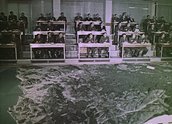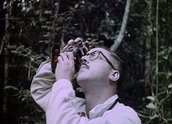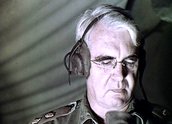


Operation Blowdown (1963)
-
As one of the Infantrymen that was sent up to Operation Blowdown in 1963 I was wondering if anyone had heard any rumours as to why we were there! I heard a rumour a few years ago that we were to be used as some sort of Guinea Pigs for something nasty but the PM at the time didn't think it was a good idea,does anyone have anything on that!!Before the explosion there was wildlife everywhere but after, it was only silence, it was certainly not good for the Wild things.
#1 from chasrose – 11 years, 11 months ago.
-
Hi Chasrose, chapter 15, "Damage to Forests" in the U.S. Defense Nuclear Agency manual "Capabilities of Nuclear Weapons" (DNA-EM-1, dated 1972, report AD-A955399), Section II, "Troop and Vehicle Movement", answers your question:
"The effects of a nuclear explosion on a forest may have a significant influence on military operations within the region of the forest that is affected by the burst. Two H.E. (high explosive) tests have provided information concerning the character of the region that is damaged and the effect on vehicular and troop movement that the damage will cause."
There is a revised version of that section, including graphs and text which were deleted from the declassified manual, in the report "Forest Blowdown from Nuclear Airblast", DNA-3054F, AD763750, which shows how the number of tree stems blown down per acre varies with the distance from the point of the explosion, and gives the average diameter of the stem debris.
It also gives graphs and tables of data showing the difficulty to wheeled vehicles, M113's, tanks, and troops in crossing tree debris of different stem diameters and debris densities.
This data added to nuclear weapon test blowdown of 65% stem breakage in a natural Pisona forest on William and Victor islands in Bikini Atoll, 12 miles from the 15 Megaton Bravo nuclear test of 1954 (see weapon test report WT-921, AD465294, "Blast Effects on Tree Stand", pages 28 and 43). There were no firestorms in any of these forests. The green leaves exposed to the heat flash smoked, and this smoke screen protected the drier leaf litter on the forest floor from heat.
The 50 ton TNT "Operation Blowdown" test at Iron Range, Australia on 18 July 1963 gave rainforest data for troop movement in tropical rainforests like Vietnam (10% of trees were downed at 640 feet radius, half by uprooting and half by stem breakage), while the 50 tons TNT "Distant Plain shot-4" at Alberta, Canada on 16 August 1966 gave data valid for European and Russian coniferous forests (50% of trees down at 444 feet radius, mainly by uprooting due to poor soil).
The general idea for Vietnam was to see what effect blowing down a belt of rainforest between the North and South would have on the problem of policing insurgent infiltrations. Tree blowdown is actually a very good way of slowing movement and exposing insurgent activities to aerial observation, but President Johnson however forbade the use of air burst nuclear weapons. But permitted chemicals like Agent Orange to be used to remove the jungle cover, which remained a jungle pollutant far longer than the insignificant fast-decaying air burst fallout would have done.
#2 from Nige – 11 years, 10 months ago.
![]() RSS – Subscribe to an RSS feed of comments on this title. (learn about RSS)
RSS – Subscribe to an RSS feed of comments on this title. (learn about RSS)


